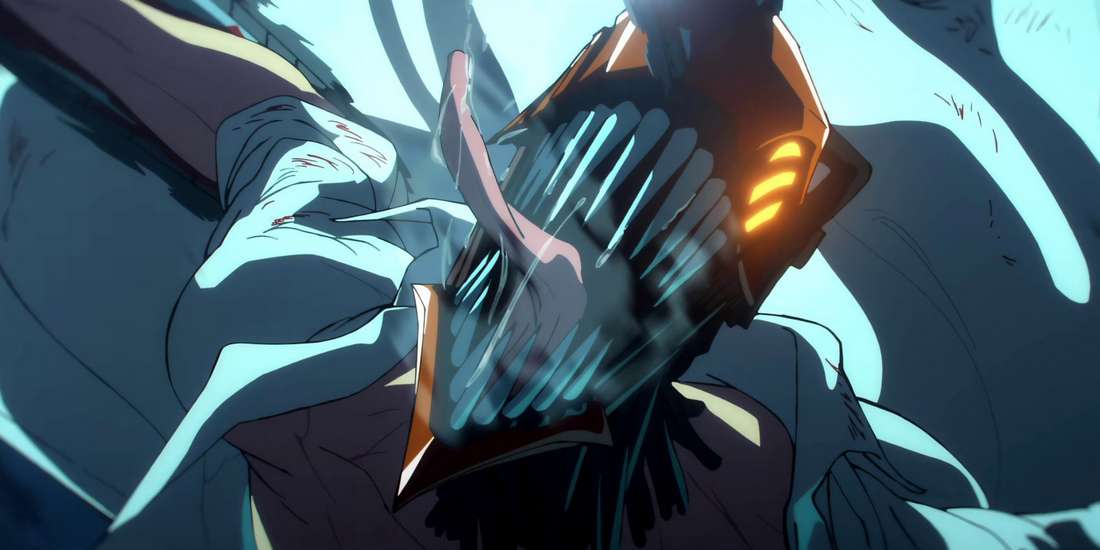Chainsaw Man – The Movie: Reze Arc – A Masterclass in Spectacle and Storytelling (High CPC Keywords)
Popular Now
 Black Myth: Wukong
Black Myth: Wukong
 Candy Crush Saga
Candy Crush Saga
 League of Legends
League of Legends
 Minecraft
Minecraft
 Fall Guys
Fall Guys
 Valorant
Valorant
 Counter-Strike 2
Counter-Strike 2
 Fortnite
Fortnite
 Among Us
Among Us
 Stumble Guys
Stumble Guys  The highly anticipated Chainsaw Man – The Movie: Reze Arc has finally hit theatres, igniting a fierce debate among critics and fans. The film, which adapts one of the most beloved segments of Tatsuki Fujimoto’s original manga, is being hailed as a cinematic triumph for newcomers but is simultaneously raising questions about its faithfulness and tonal shifts that may frustrate the core fanbase. This review breaks down why this visually stunning dark fantasy movie is a near-perfect entry point for new audiences while posing potential issues for dedicated manga readers.
The highly anticipated Chainsaw Man – The Movie: Reze Arc has finally hit theatres, igniting a fierce debate among critics and fans. The film, which adapts one of the most beloved segments of Tatsuki Fujimoto’s original manga, is being hailed as a cinematic triumph for newcomers but is simultaneously raising questions about its faithfulness and tonal shifts that may frustrate the core fanbase. This review breaks down why this visually stunning dark fantasy movie is a near-perfect entry point for new audiences while posing potential issues for dedicated manga readers.
 Why the Reze Arc is Perfect for Chainsaw Man Newcomers
Why the Reze Arc is Perfect for Chainsaw Man Newcomers
For those who have never encountered Denji, Power, or the Public Safety Devil Hunters, the Reze Arc functions as a surprisingly self-contained narrative. The film, which focuses on the relationship between protagonist Denji and the enigmatic Reze, offers a complete emotional journey without demanding extensive prior knowledge of the series’ complex mythology.
- A Focused, Contained Plot: Unlike many anime movie sequels, this arc centers on a single, compelling storyline: a teenage boy’s pursuit of a simple life and his devastating first experience with love and betrayal. This laser focus makes the emotional core—a key element for high-quality storytelling—immediately accessible.
- High-Octane Action Sequences: Studio MAPPA, known for its impeccable production value, delivers some of the most spectacular, fluid, and hyperkinetic action sequences in modern anime cinema. The climactic battle sequences are a sensory overload, showcasing the Bomb Devil’s destructive power against Chainsaw Man’s raw brutality. This spectacle alone justifies the high box office expectations and serves as an excellent showcase for the franchise’s potential.
- Emotional Depth and Character Study: The movie’s first half is a slow-burn romantic drama, beautifully highlighting Denji’s vulnerability and his profound desire for connection. This grounded, slice-of-life setup provides an immediate, relatable hook for new viewers before the narrative descends into its signature gore and chaos. This blend of genre is a powerful marketing strategy, appealing to a broader audience than the core horror-action demographic.
The Core Fan Dilemma: Pacing, Tonal Shifts, and Art Style Changes
While the film’s accessibility is a boon for its global reach and high CPC keywords like “anime investment,” it comes with certain creative decisions that have led to friction among longtime fans. The source material is known for its erratic energy, abrupt tonal shifts, and a gritty, almost punk-rock aesthetic. The movie, in its pursuit of cinematic polish and emotional clarity, adjusts these elements.
The Change in Artistic and Tonal Direction
Strong creative choices are inherent in adaptation, but here they risk diluting the series’ unique flavor:
- The “Cleaner” Aesthetic: Some fans of the manga and the first season appreciated its intentionally rough, “dirty” art style and slow, cinematic pacing. The film, in many action moments, shifts to a brighter, more fluid 2D animation reminiscent of the chaotic energy seen in other major shonen franchises. While visually breathtaking, this change makes the film feel less distinct than the first season, leading to debates on whether it loses some of the original’s essential grit.
- Streamlining Key Moments: A film format necessitates efficiency. Certain subplots, background characters (like Aki and Power’s), or moments of quiet introspection that deepened the manga’s world have been reportedly trimmed or simplified. For the dedicated fan, these omissions can feel like a loss of narrative texture. They valued the original, complex character development, and seeing it condensed for pacing can be frustrating.
- Shifting the Humor/Seriousness Balance: Tatsuki Fujimoto’s work is a masterclass in switching from slapstick comedy to devastating horror in a single panel. Reports suggest the movie, especially in its first act, leans heavily into the romantic-comedy aspects. While effective for setting up the emotional stakes, some fans feel the abruptness and dark humor of the manga’s early interactions are softened to create a more conventional, albeit still dark, cinematic romance. This is a crucial factor for fans who analyze the Return on Investment (ROI) in a major adaptation.
Conclusion: A Must-Watch Cinematic Experience
The Chainsaw Man – The Movie: Reze Arc is an undeniable cinematic spectacle, securing its place as one of the most important Japanese Animation releases of the year. It brilliantly captures the emotional heart of the Reze arc—Denji’s aching human desire for a normal life—and pairs it with some of the most innovative and explosive action ever put to screen.
Newcomers will find an accessible, emotionally resonant, and visually stunning dark fantasy that serves as a high-quality entry point into the CSM world. For the veteran fans, the film is a glorious, hyper-animated realization of a beloved story, even if its artistic polish and pacing adjustments occasionally smooth out the rough, uncomfortable edges that made the source material so revolutionary.
Ultimately, the movie is a huge victory for the franchise, proving that Chainsaw Man’s brand can translate its unique, chaotic genius to the biggest screen possible while securing its position as a top-tier media property for future media investments.






 Why the Reze Arc is Perfect for Chainsaw Man Newcomers
Why the Reze Arc is Perfect for Chainsaw Man Newcomers